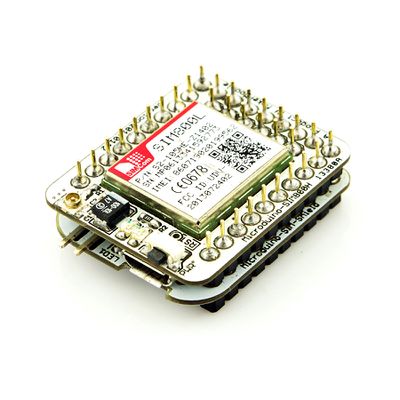|
Microduino-GPRS/GSM module can get Microduino core board connected to the internet and achieve the function of sending and receiving messages when it is just inserted with a SIM card and follows some simple instructions.
Features
- ESD protection;
- Capable of being charged by USB, li-ion or other power supply options;
- Support automatic baud rate detection function;
- Capable of sending AT instructions and data through the serial port;
- Small, cheap, stackable and open;
- Open hardware circuit design and Arduino compatible programming development environment;
- Uniform Microduino interface standard and rich peripheral modules, capable of having a fast and flexible connection and extension with other modules and sensors in accord with Microduino interface standard;
- Easy to be integrated to pegboards with a 2.45-pitch female header connector interface.
Specifications
Adopt SIM800L module to support four-band GSM/GPRS, whose working band is:GSM850, EGSM900, DCS1800 and PCS1900MHz.
- Electrical characteristics
- Working voltage:3.4V ~4.4V;
- The current consumption is 0.7 mA under the Sleep Mode
- GPRS data
- The maximum data transmission rate of GPRS is 85.6 kbps;;
- Build-in TCP/IP protocol;
- Encoding format:CS-1, CS-2, CS-3 and CS-4;
- Support Unstructured Supplementary Service Data (USSD)
- Serial debugging
- Support standard full-function serial as well as the transmission rate with a range from 1200bps to 115200bps;
- Support the serial port multiplexing function complying with GSM 07.10 protocol;
- SIM card power and base plant
Document
Development
You can use GSM library to test, https://github.com/Microduino/Microduino_Tutorials/tree/master/Microduino_Libraries/_03_Microduino_GSM_SIM800L
Note:This library only supports Microduino-core.
Application
Send short messages using the example program.
Preparation
- Hardware:Microduino FT232R, Microduino Core, Microduino GSM, USB cable or lithium battery;
- Software: GSM library, Arduino IDE (version 1.0.3 and higher);
- Uncompressed the zip folder to libraries of Arduino IDE;
- Connect the Microduino FT232R and PC using USB cable to download program and monitor the serial port;
- USB cable or li-ion battery to charge the Microduino GSM module and press the power button for a long time to activate Microduino GSM for about 4 seconds. That the power-on indicator goes on shows a successful start.
Debugging
- Download the test program:
https://github.com/Microduino/Microduino_Tutorials/commit/25a821ba8894fb02d4b1560c9912450cc353b875
- Open the test program, and then you need double check the following parameter:
- “#define NUM "13667928xxx"”:Need change to the number that receive message.
- “#define SMS_CEN "13010720xxx"”:Your message center for you own mobile phone number, you can find it in your phone. It isn't the necessary. If hit an issue during send a message, you can try it.
- Compile the program, select the board type "Microduino Core+ (Atmega644P@16M,5V)", download directly:
- Open the serial monitor, set the baud rate is 9600:
- Input "t", to send the message "wiki.microduino.cc";
- Input "d", you can make a call, but can't finish a normal call, because no the speaker and microphone;
- Input "h", you can submit a HTTP request to get some data from network;
- Input "s", you can send the sensor data to network.
- If using Microduino-Core to debug, you need the soft serial port(TX1, RX1)
- If you use the Microduino Core to debug, must use the Software Serail (TX1,RX1)
- Use the Software Serial library
#include <SoftwareSerial.h>
SoftwareSerial mySerial(2, 3); // RX, TX
- Change the Serial1 to mySerial, it should be ok。
- If you use the Microduino CoreUSB to debug, you only need to change the serial to serial 0 (TX0,RX0).
FAQ
- Can this module be used to make a voice call? Is a pin available for voice?
- This module can’t be used to make a voice call, because it doesn’t have the required pin.
- Does this module work with Core+ module?
- Does this module use Arduino GSM library?
- Does this module work with 3G?
- No, it only supports GPRS and GSM.
- How is this module powered?
- There are two methods:
- Using the USB port attached to the module with a 5V, 1A power supply (Voltage 5V, Amperage 1A)
- Using a 3.7V Li-ion battery attached to the module
'The BM module can power the Core module and other modules, such as the 10DOF. However, use of the BM module to power the GPRS/GSM module is not suggested due to its significant power consumption.
Purchase
History
Picture
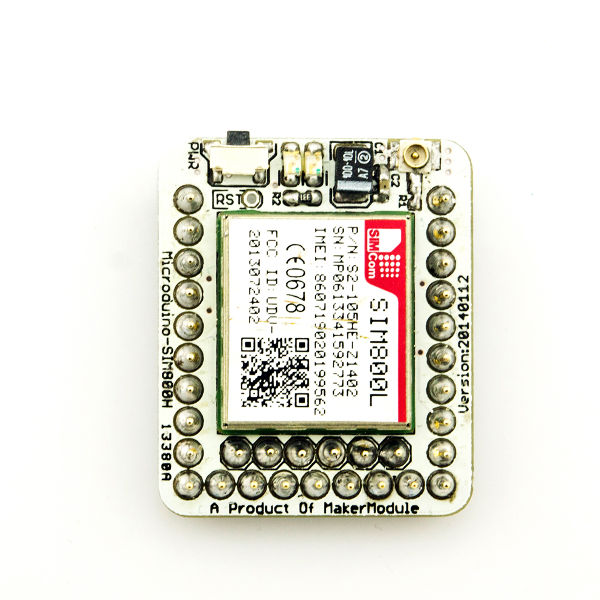 Microduino-GPRS/GSM Front 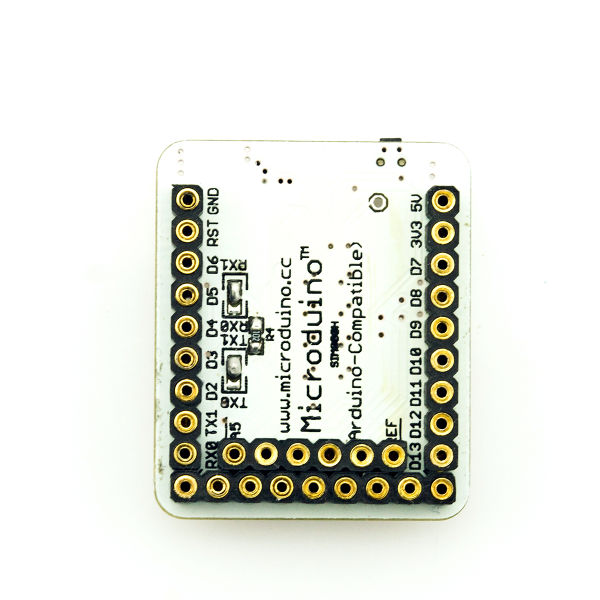 Microduino-GPRS/GSM Front 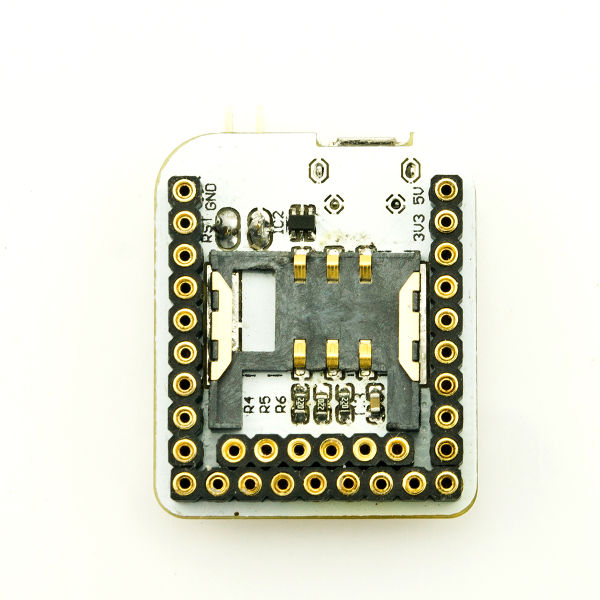 Microduino-GPRS/GSM Front 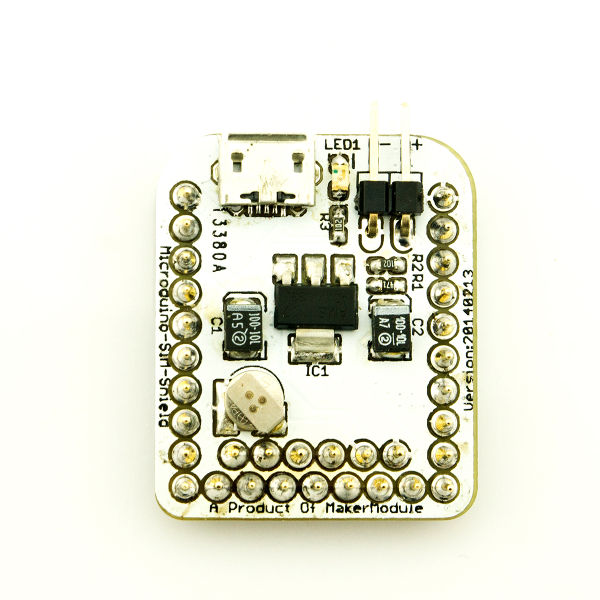 Microduino-GPRS/GSM Front Video
|
